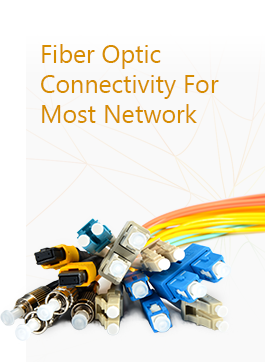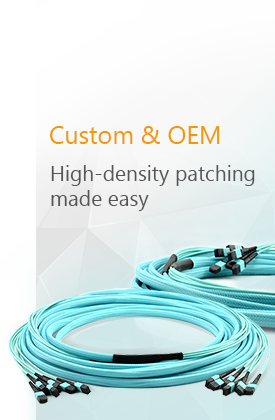In the intricate web of global telecommunications, few technologies have had as transformative an impact as the Erbium-Doped Fiber Amplifier (EDFA). Often dubbed the "heart of modern optical networks," EDFA technology has redefined long-distance data transmission by eliminating the need for cumbersome optical-electrical-optical (OEO) conversions. As we stand at the cusp of 6G networks and terabit-scale data demands, understanding EDFA's role in powering global connectivity becomes critical. This article explores the technology's principles, evolution, and its pivotal role in shaping the future of fiber-optic communication.
The Science Behind EDFA: Amplifying Light with Rare-Earth Elements
At its core, EDFA leverages the quantum properties of erbium ions (Er³⁺) embedded in silica fiber. When pumped with 980nm or 1480nm laser light, these ions undergo energy transitions that enable stimulated emission—a process where incoming 1550nm signal photons trigger the release of identical photons, amplifying the optical signal without converting it to electrical form. This direct optical amplification occurs in the C-band (1530-1565nm) and L-band (1570-1610nm), coinciding with silica fiber's lowest attenuation window (0.2dB/km).
Modern EDFA designs incorporate advanced features:
- Dual-stage pumping for enhanced gain and noise control.
- Gain-flattened filters (GFF) to maintain uniform amplification across wavelengths.
- Dynamic gain equalization for compatibility with DWDM (Dense Wavelength Division Multiplexing) systems.
Why EDFA Dominates Optical Networks
Compared to traditional amplifiers like semiconductor optical amplifiers (SOAs), EDFA offers distinct advantages:
- Ultra-Low Noise: With noise figures as low as 4dB, EDFA ensures minimal signal degradation over thousands of kilometers.
- High Saturation Power: Commercial units deliver up to 33dBm output, supporting multi-span transmission.
- Broadband Capability: Recent breakthroughs in C+L band amplification extend usable spectrum to 80nm, enabling single-fiber capacities exceeding 1Pbps.
- Reliability: Field-proven MTBF rates exceed 200,000 hours in submarine cable deployments.
Revolutionizing 5G, Data Centers, and Beyond
EDFA's versatility extends across diverse applications:
1. 5G Transport Networks
In 5G CRAN (Centralized RAN) architectures, compact EDFA modules extend fronthaul reach to 20km while maintaining sub-1μs latency. AI-driven gain control systems dynamically adjust pump power to compensate for fiber aging, reducing outage risks by 73% according to Cisco's field trials.
2. Hyperscale Data Centers
Data center interconnects (DCIs) leverage EDFA-powered coherent transmission to achieve 800Gbps per wavelength. Huawei's OptiXtrans EDFA series reduces per-bit power consumption by 40% through digital twin optimization, critical for energy-efficient AI cluster communications.
3. Submarine Cable Systems
The MAREA transatlantic cable uses EDFA-Raman hybrid amplification to sustain 96Tbps capacity across 6,600km. Emerging multi-core fiber EDFA designs from NTT promise 7x capacity gains through spatial division multiplexing (SDM).
The Road Ahead: EDFA in the 6G Era
As researchers target 1Tbps per-wave speeds for 6G, EDFA innovation accelerates:
- Quantum-Dot Enhanced EDFA: Bell Labs' prototype achieves 3dB noise figures using semiconductor quantum dots.
- Bismuth-Doped Fibers: Extending amplification to 1700nm for THz-band communication.
- Photonic Integration: Silicon-photonics EDFA chips (10×5×2cm³) enable plug-and-play deployment in edge networks.
Market Dynamics and Sustainability
The global EDFA market, valued at 6B by 2030. Key drivers include:
- 5G/6G deployments: Require 20% more EDFA units per network node.
- Green initiatives: Next-gen EDFA designs cut power use by 50% through superconducting pump lasers.
- Emerging economies: Asia-Pacific's "Digital Silk Road" initiative drives submarine cable investments.
Conclusion: The Invisible Engine of Global Connectivity
From powering internet backbone links to enabling real-time 5G services, EDFA remains indispensable. As AI and IoT generate exponential data growth, ongoing innovations in broadband amplification, energy efficiency, and miniaturization will ensure EDFA's dominance through the 6G era and beyond. For network engineers and telecom providers, mastering EDFA technology isn't just an option—it's the key to unlocking tomorrow's hyperconnected world.
More info about Fiber EDFA, please visit our official website:



